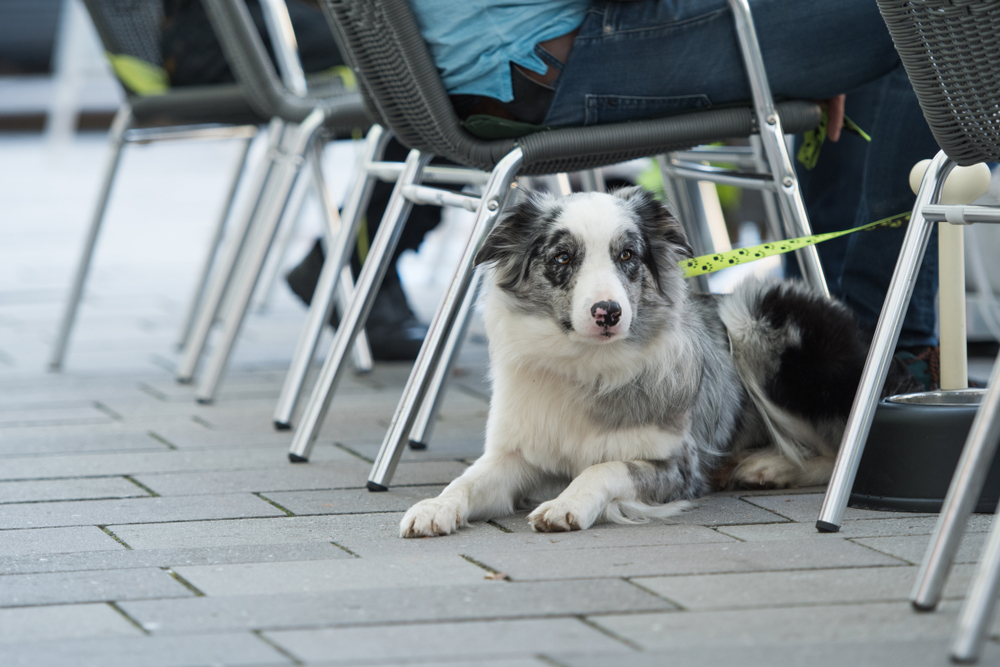It sounds like a fun idea to take your dog to the monthly art gallery walk downtown, the outdoor patio of a dog-welcoming restaurant, or for a ride in a kayak. These activities may seem safe and fun for you, but to your dog, they can be downright scary.
How can you tell if your dog is up for an adventure or prefers to be a homebody? For answers, we turned to a trio of dog experts who have logged thousands of miles and attended hundreds of activities with a dog or more.
They include Carol Bryant, president of the Dog Writers Association of America and a professional pet blogger/writer who travels all over North America with Dexter, her Cocker Spaniel; Maureen Patin, certified professional dog trainer and founder of What A Great Dog training centers in Richardson and Frisco, Texas; and Cara Armour, former Pet Sitter of the Year for Pet Sitters International who competes in top levels of agility all over the United States with her Boxers, Debbie, Walter, and Phoenix.
We caught up with Armour during her recent 15-hour drive back to her home in Bolton, Massachusetts, after she and her dogs competed in Indianapolis. Her dogs dozed happily inside their individual crates fitted on racks bolted into the floor of her Toyota Sienna to and from the competition. Each dog’s crate included comfortable bedding, favorite toys, and water in non-spill containers.
Go Slow and Plan Ahead
“Don’t set up your dog for failure by trying too much too fast,” Armour says. “Before you decide to take your dog on a road trip, first start by having him in your parked car in the driveway. Open and close the door, click and treat for welcomed behaviors and signs of calmness. Then take a short drive in the neighborhood, checking your dog’s emotional state, and gradually increase the distance over time.”
Bryant’s dog, Dexter, has joined her on adventures since he was a puppy. Bryant conditioned Dexter to road trips early on, starting with helping Dexter view visits to the veterinary clinic as welcoming places.
“We would drive Dexter when he was a pup to the veterinary clinic just for social visits and we did the same with the groomer so Dexter got to view these places as happy places,” says Bryant. “We started small and built up the duration of our trips. We always tell him what a good boy he is and rely on distractions. I carry a favorite squeaky ball of his that acts sort of like his ‘security blanket.’ He sees it and lights up and everything is okay.”
She also exposed Dexter to what she calls ‘practice rounds” before making a major road trip. These include going to a local park to play fetch, visiting a friend’s house, or going for ice cream – all trips under one hour.
“Make the arrival to these places seem to your dog like the best thing since the invention of poop bags by celebrating and telling your dog what an awesome pooch he or she is,” Bryant says.
Know What Your Dog Is Telling You
Patin oversees a staff of two dozen certified dog trainers at her What a Great Dog centers where the focus is on using positive, reward-based training methods. She enjoys traveling with her own dogs, Roo, Jax, and Zeke.
“If you see signs of stress or fear in your dog, the kindest choice you can make is to get him out of the environment that is frightening him,” says Patin. “Physical clues like a lowered head or tail, continually visually scanning the environment, and a reluctance to move freely are extreme examples of fear. Other more subtle clues include stress panting, sweating paw pads, excessive shedding, or a furrowed brow.”
Patin emphasizes the importance of considering your dog before dashing off to a dog-welcoming place or event.
“Many dogs enjoy being on the go with their people, but not all dogs enjoy all activities,” she says. “It is important to respect your dog’s emotions. You know your dog will be safe with you at a festival, but your dog doesn’t know that. The strange noises, vehicles, strange dogs, and strange people can be completely overwhelming and really frightening to your dog. Fear is one of the worst emotions for a human or animal to experience. Think about the last time you were truly afraid. It is a dreadful feeling.”
One way to gauge your dog’s emotional state is if and how he accepts a treat in those places.
“If your dog, who normally loves treats, shows little interest in them on an outing, that’s a clear indicator that he is under stress and likely experiencing an uncomfortable level of fear,” says Patin. “You’ll know your dog is happy to be somewhere if you see a loose body and curiosity about the surroundings. You should be able to easily get his attention when you call his name and have him happily take a treat with a soft mouth.”
Parting advice: know how your dog will act in various settings and situations and have an exit plan. Even though Armour travels all over the country with her Boxers, she quickly learned the trio are not ideal candidates to walk to a dog-friendly outdoor café.
“My dogs behave well at agility events and open fields, but I’ve learned that I cannot walk all three downtown because they will bark and lunge,” says Armour. “Each one is wonderful being solo walked downtown, but the pack mentality kicks in when all three are together, so we avoid doing this. I love the connection I have with my dogs and always want to do what is necessary to ensure the adventure is safe and welcoming for them.”
This article was reviewed/edited by board-certified veterinary behaviorist Dr. Kenneth Martin and/or veterinary technician specialist in behavior Debbie Martin, LVT.








